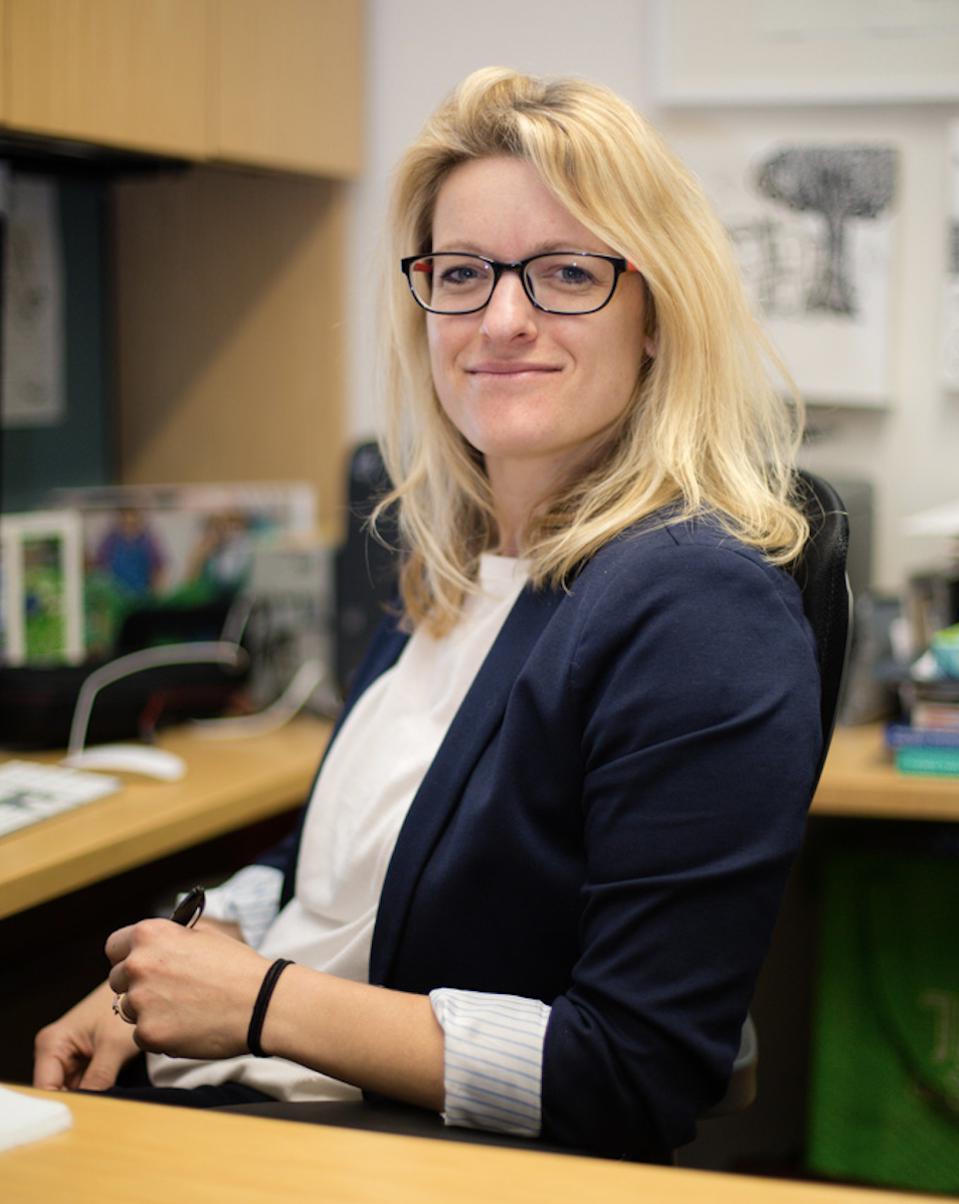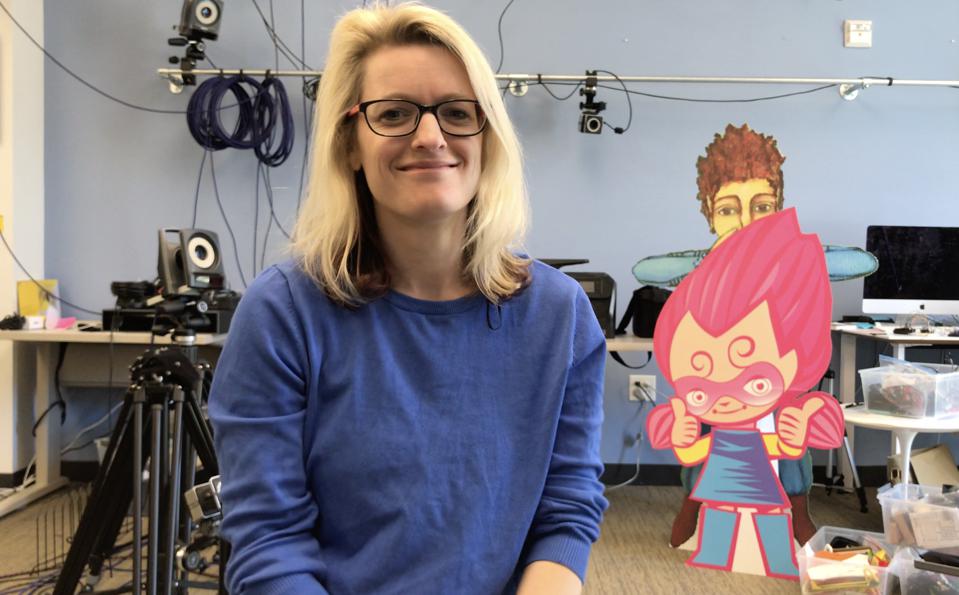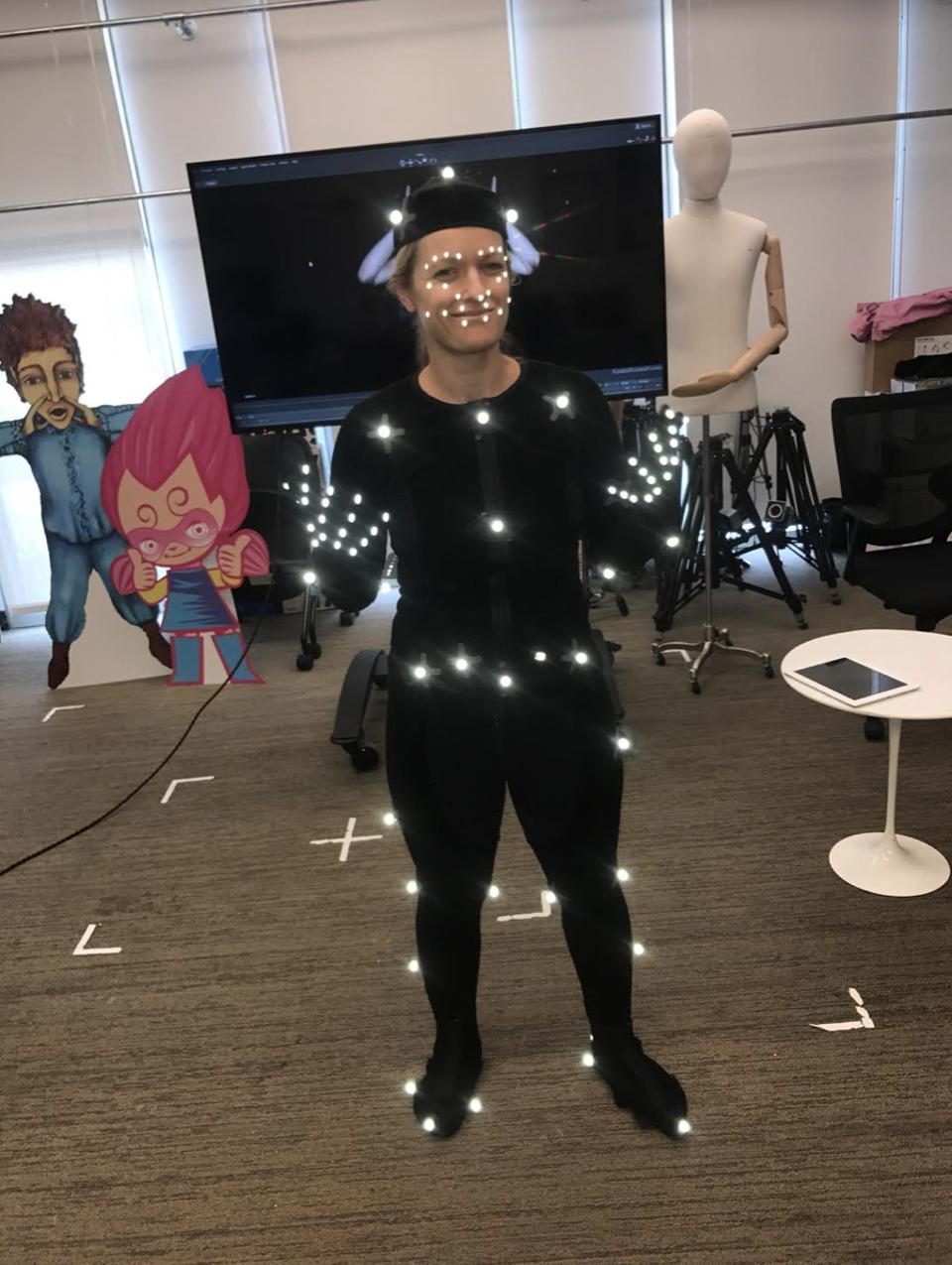
Melissa Malzkuhn
Melissa Malzkuhn started Motion Light Lab to create sign language learning and literacy resources for Deaf children—using emerging technology and storytelling. Melissa, who is third-generation Deaf, comes from a line of storytellers. Her grandmother, a pioneering Deaf rights advocate, inspired her journey as a changemaker, creative force, and advocate for language literacy. Ashoka’s Kennedy Patlan connected with Melissa to learn about her entrepreneurial journey and some of the opportunities on the horizon to harness new tech for learning, expression, employment, and narrative change.
Kennedy Patlan: Melissa, you work to make sure every Deaf child has access to language from birth. Why is this important?
Melissa Malzkuhn: A Deaf child is like any other child. They need love, nurturing, attention, and they need language. All babies, regardless of what family they are born into, will, or should, get love and nurturing. But 95% of Deaf children are born to hearing parents and this often means that they don’t get the early language exposure (via sign language) they need. Brain research tells us that all children need language exposure as early as possible. The language gap experienced by many Deaf children delays learning and has serious cognitive and emotional consequences.
Patlan: How did your upbringing influence your understanding of Deaf culture?
Malzkuhn: I grew up in a thriving Deaf community in the Bay Area with a Deaf family—grandparents, parents, and siblings. We used American Sign Language at home. So, I grew up sharing ideas, going to school, going to community events like the theater. It was only later that I became aware of the profound isolation faced by children who do not use sign language in their home and who live apart from a Deaf community. It was my college internship at the World Federation for the Deaf that showed me the huge language disparity among Deaf people worldwide, even within the United States.
Patlan: For readers who are hearing, can you say more about Deaf culture?
Malzkuhn: Yes! The Deaf community is a vibrant community, and we use sign language, and we have our culture, histories, stories, and traditions. There’s a very robust community, with a global network, with literature and art and mindblowing poetry expressed through sign language. In fact, when Deaf children who grow up without sign language or Deaf role models discover the Deaf community later in life, many also discover their sense of self and identity.
Patlan: You started Motion Light Lab at Gallaudet University in 2010. What were you seeing that others didn’t?
MORE FOR YOU
Malzkuhn: I joined Gallaudet’s National Science Foundation Science of Learning Center on Visual Language and Learning (VL2) to develop community engagement. I started to meet parents and talk to them about the research findings about language. Parents seemed interested, but they asked more questions about daily living. They wanted to know how the research applied to them—in their home, their family. That led me down the path of thinking about how research can infuse design decisions for tools, resources, and products. This is how I came to lead the creation of the world’s first bilingual storybook app, designed with research principles, to support literacy development in deaf children.

Melissa in her lab, with one of her team’s Storybook protagonists: Mavokely, the Baobab Girl.
Through creating The Baobab (our first storybook app), I pulled people together, and this process strengthened a creative synergy into something bigger—a lab, a team, and a R&D directive. Since then, we’ve created over 20 storybook apps, and worked with teams around the globe.
Patlan: Motion Light Lab connects Deaf students with Deaf artists, technologists, and experts. Why is this interdisciplinary aspect important?
Malzkuhn: Take the Storybook apps. Creating an app requires skills in different areas like production, programming, illustration, design, and animation. We believed that people could learn all of these skills and in the process, we could elevate and create opportunities for Deaf programmers and creatives. Unemployment for Deaf people and people with disabilities is high—40 percent of Deaf adults in the U.S. don’t have a job. Incredibly talented Deaf people are everywhere, but they lack opportunities to grow. Motion Light Lab is bringing profoundly talented Deaf people to the table—to the benefit of all.
Patlan: So, the Storybook apps are built by a Deaf team?
Malzkuhn: Yes. The entire team is Deaf. When we meet with young Deaf children, they get excited, and tell us that they want to create stories and apps, too. It’s that moment where they see that the possibilities are endless, right? Being involved in all phases of development gives an opportunity for Deaf people to learn, grow, develop new skills that they can use with us, or elsewhere. I see Motion Light Lab as a space where we can support professional growth for all the disciplines in environments where Deaf people are working together.
Of course, technology is evolving all the time, and it is exciting how quickly things are changing. To me, it’s important to consider: Who designs, who develops? Who are the architects? These are big issues. Deaf people are often not involved in the design process, even when they are the end users. Accessibility can feel inorganic, uncomfortable, an afterthought. This, however, has been shifting as more people are embracing universal design because it’s beneficial and ethical. My colleague Dr. Quandt and I founded CREST Network because we want to encourage more deaf participation and representation in emerging technologies and sign language.
Patlan: Do you support Deaf communities outside the U.S.?
Malzkuhn: Yes. We have a CoLabs program where we work and train teams in other countries to create bilingual storybook apps in their sign languages. It’s a cultural exchange program. Our goal is to have the teams build their own infrastructure. They need buy-in from the community, which means potentially funding sources as well. I work closely with the project leads, advocating for Deaf-led decision making and agency in development. Deaf children need to see and be exposed to leadership by Deaf people. I’m always fascinated with stories from other countries, their folktales, their cultural traditions. We exchange stories, and broaden literacy materials for deaf children. It’s one of my favorite parts of the lab. There are over 300 known sign languages around the world, so there is linguistic diversity out there that is entirely visual. It’s an added dimension to our humanity that’s rich and interesting.
Patlan: What’s next for Motion Light Lab? What are you excited about?

Melissa and her team of Storybook creatives use special suits to perfect their sign language … [+]
Malzkuhn: Many things! We’re working on new storybook apps with diverse Deaf storytellers and illustrators—and working on 3D signing characters, made possible by motion capture technology. The work is exciting and very challenging because we are advancing the technology to create linguistically fluent, natural signing experiences in 3D environments. I see huge potential with the uses of 3D signing characters, from games to stories, and interactive experiences. I’m excited to see our resources become more mainstream and people start to see signing as just another way of communicating. It’s a part of our society. And it’s a beautiful part of the language diversity that we see in the world.
Melissa Malzkuhn is an Ashoka social entrepreneur. You can read more about Motion Light Lab here and watch a short video from PBS Newshour’s “Brief but Spectacular” segment here.
The article was originally posted at: %xml_tags[post_author]% %author_name% Source%post_title%
